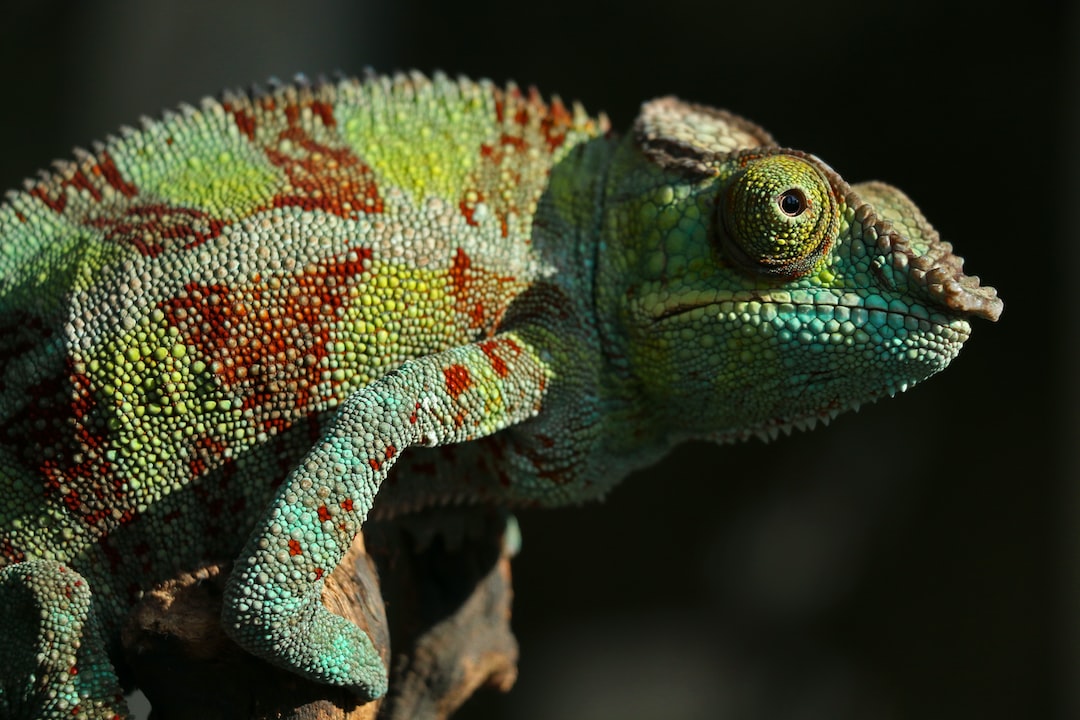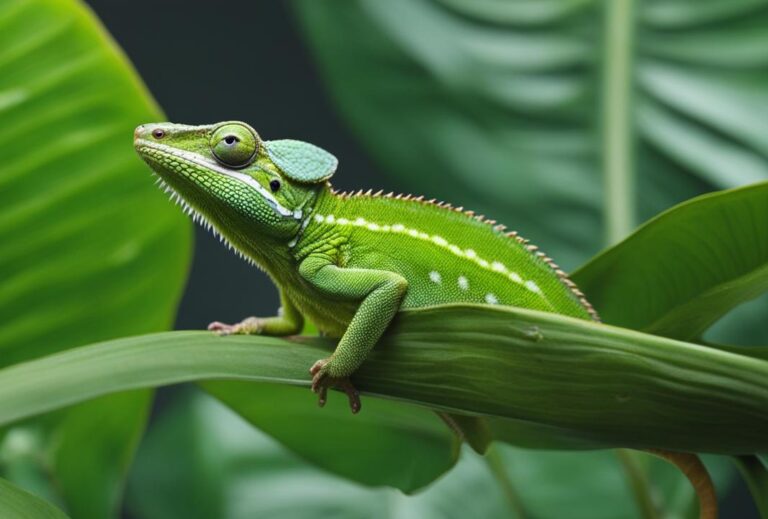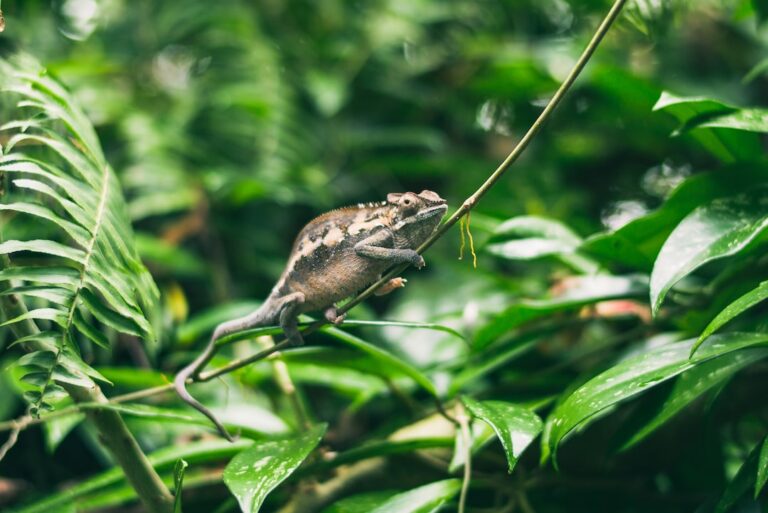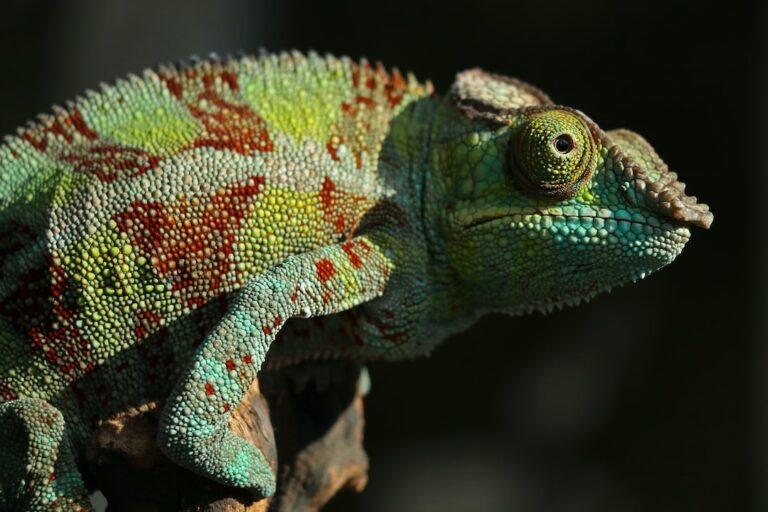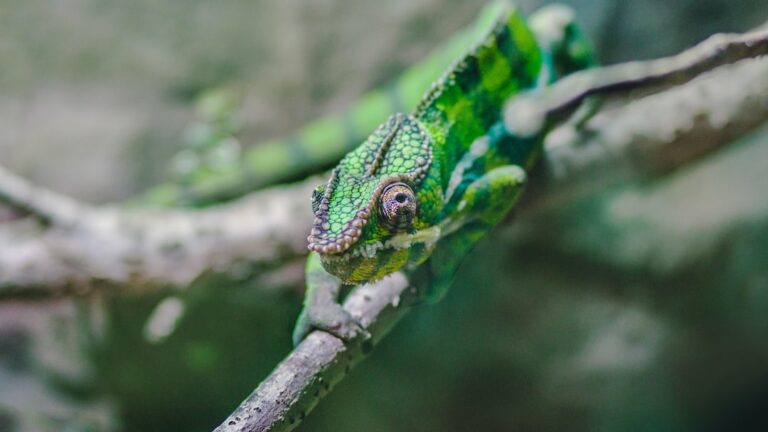Do Chameleons Know When They Change Color?
Chameleons are fascinating creatures known for their unique ability to change color. This remarkable adaptation has captivated the attention of scientists and nature enthusiasts alike. Chameleons are famous for their ability to blend seamlessly into their surroundings, but their color change serves a variety of purposes beyond camouflage. Understanding the science behind chameleon color change is crucial for unraveling the mysteries of this incredible phenomenon.
Table of Contents
The Science Behind Chameleon Color Change
Chameleons change color through specialized cells called chromatophores. These cells contain pigments that can expand or contract, allowing the chameleon to alter its coloration. There are three main types of chromatophores: melanophores, xanthophores, and iridophores. Melanophores contain dark pigments, xanthophores contain yellow pigments, and iridophores contain reflective crystals.
Melanophores are responsible for producing dark colors, while xanthophores produce yellow colors. Iridophores, on the other hand, reflect light and create iridescent colors. By manipulating the size and distribution of these chromatophores, chameleons can create a wide range of colors.
How Do Chameleons Change Color?
The process of chameleon color change is complex and involves several steps. First, the chameleon’s brain sends signals to the chromatophores to expand or contract. This is controlled by hormones and neural pathways. Next, the pigments within the chromatophores are redistributed, changing the color of the chameleon’s skin.
Light and temperature play a crucial role in chameleon color change. Different wavelengths of light can trigger specific color changes in chameleons. For example, blue light can cause a chameleon to turn blue, while red light can cause it to turn red. Temperature also affects color change, as warmer temperatures can stimulate coloration.
The Purpose of Chameleon Color Change
Chameleons change color for a variety of reasons, with camouflage being one of the most well-known purposes. By blending in with their surroundings, chameleons can avoid predators and sneak up on prey. However, color change also serves other functions, such as communication and thermoregulation.
Chameleons use color change to communicate with other chameleons. Males, in particular, use vibrant displays to attract mates and establish dominance. Color change can also be used to signal aggression or submission. Additionally, chameleons may change color to regulate their body temperature. Darker colors absorb more heat, while lighter colors reflect heat.
Can Chameleons Change Color to Blend In?
While chameleon color change is often associated with camouflage, its effectiveness as a hiding mechanism is still a topic of debate among scientists. Some studies suggest that chameleons are not as effective at blending in as previously believed. Their color change may be more noticeable to predators than originally thought.
However, there are instances where chameleons do successfully blend in with their surroundings. For example, some species have the ability to match the color and pattern of tree bark or leaves. This allows them to remain hidden from predators and unsuspecting prey.
Do Chameleons Change Color to Communicate?
Chameleons also use color change as a means of communication. Males often display vibrant colors to attract females during mating season. These displays can include bright greens, blues, and yellows. Additionally, males may change their colors to signal aggression or submission during territorial disputes.
Color change can also be used as a warning signal. Some chameleons have bright patterns or contrasting colors that serve as a deterrent to potential predators. These warning signals indicate that the chameleon is toxic or dangerous.
The Role of Hormones in Chameleon Color Change
Hormones play a crucial role in regulating chameleon color change. The hormone responsible for initiating color change is called melanocyte-stimulating hormone (MSH). MSH is released by the pituitary gland in response to external stimuli, such as light or temperature.
Stress and other environmental factors can affect hormone levels and, consequently, color change. When chameleons are stressed, their hormone levels can become imbalanced, leading to abnormal coloration. This is why chameleons may change color when they are handled or placed in unfamiliar environments.
Can Chameleons Control Their Color Change?
Chameleons have some control over their color change, but it is not entirely conscious. While they can initiate color change in response to external stimuli, such as light or temperature, they do not have complete control over the process. The brain sends signals to the chromatophores, but the exact mechanisms behind this control are still not fully understood.
Genetics also play a role in chameleon color change. Different species have different abilities to change color, and this variation is likely influenced by their genetic makeup. Some chameleons may have more specialized chromatophores or a greater number of chromatophores, allowing for more complex color changes.
Do Chameleons Change Color When They’re Stressed?
Yes, chameleons can change color when they are stressed. Stressors such as handling, loud noises, or changes in their environment can trigger a stress response in chameleons. This can lead to changes in hormone levels and subsequent color change.
Stress-induced color change is often characterized by darkening of the skin or the appearance of bold patterns. These changes are thought to be a defensive mechanism, warning potential predators that the chameleon is under duress.
The Evolution of Chameleon Color Change
Chameleon color change has evolved over millions of years and has played a crucial role in the survival and adaptation of these reptiles. The ability to change color has allowed chameleons to blend in with their surroundings, making them less visible to predators and increasing their chances of survival.
Color change has also helped chameleons communicate with each other and establish social hierarchies. By displaying vibrant colors, males can attract mates and assert dominance. Additionally, warning signals in the form of bright colors or patterns have evolved to deter predators.
Chameleon Color Change in Captivity vs. the Wild
Chameleon color change can be influenced by different factors in captivity compared to the wild. In captivity, chameleons may not have access to the same environmental cues that trigger color change in the wild. This can result in less frequent or less pronounced color changes.
Additionally, stressors in captivity may lead to abnormal coloration. Chameleons kept in stressful or unnatural environments may exhibit constant color changes or duller colors. It is important for chameleon owners to provide a suitable and stress-free environment to ensure the health and well-being of their pets.
Chameleon color change is a fascinating phenomenon that serves a variety of purposes, including camouflage, communication, and thermoregulation. Understanding the science behind this adaptation is crucial for unraveling its complexities and appreciating the remarkable abilities of these reptiles.
Continued research into chameleon color change is essential for gaining a deeper understanding of its functions and mechanisms. By studying these incredible creatures, scientists can uncover more about the evolution of color change and its role in the survival and adaptation of chameleons.
If you’re interested in learning more about reptiles, you might enjoy reading the article “Are Chameleons Sensitive to Sound?” This informative piece explores the fascinating world of chameleons and their ability to perceive sound. Discover how these remarkable creatures use their unique auditory system to communicate and navigate their environment. To delve deeper into this topic, click here.

